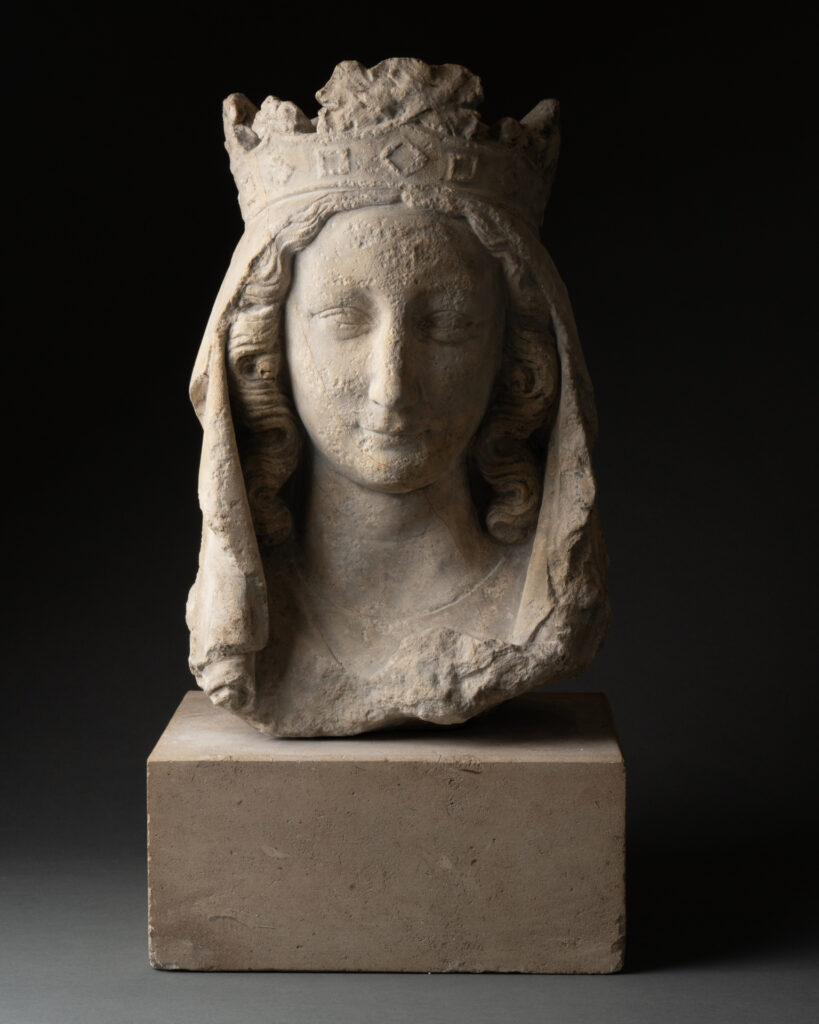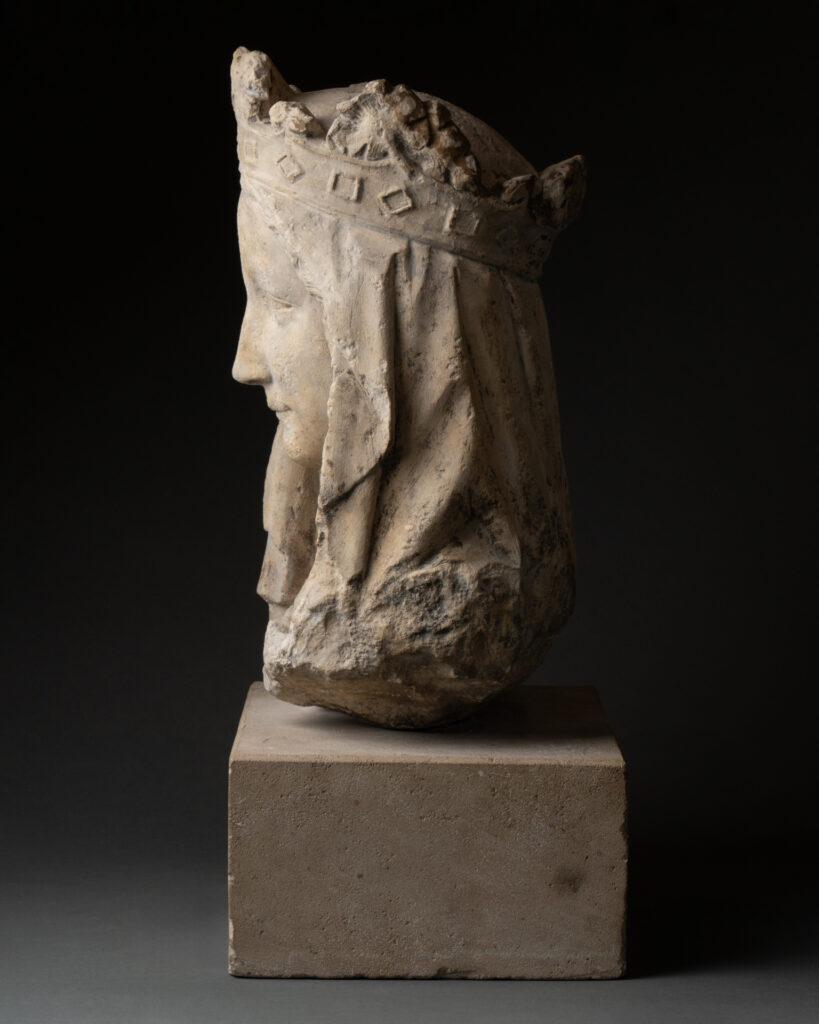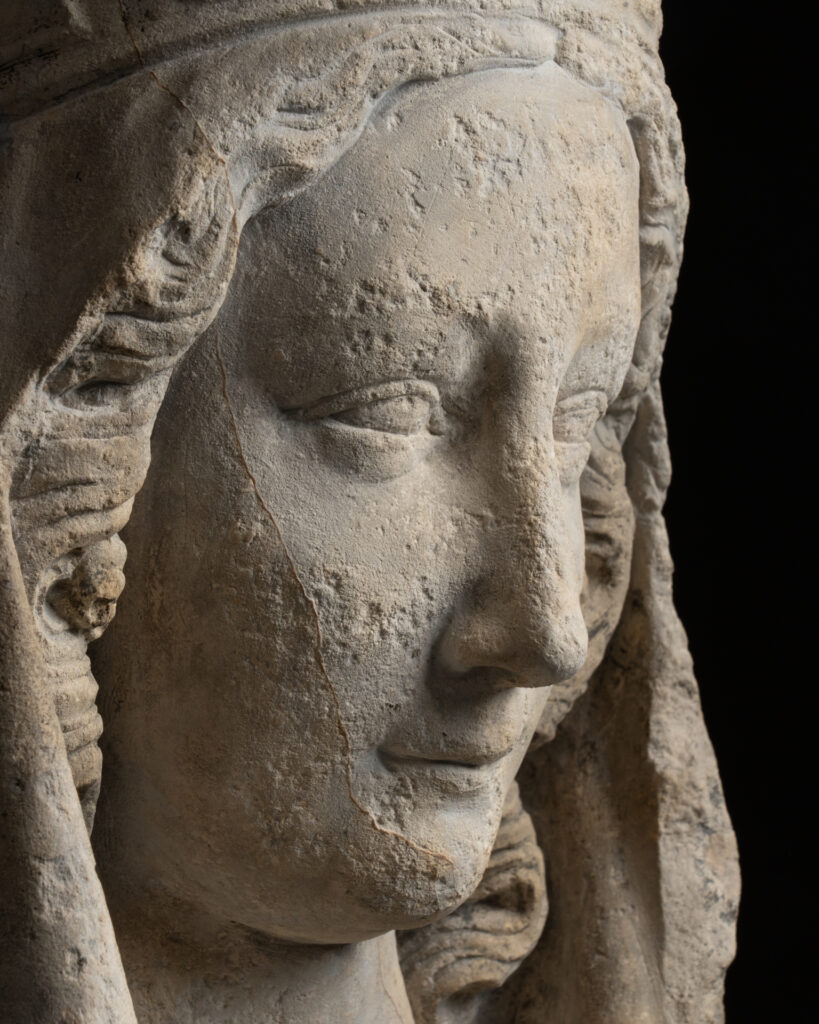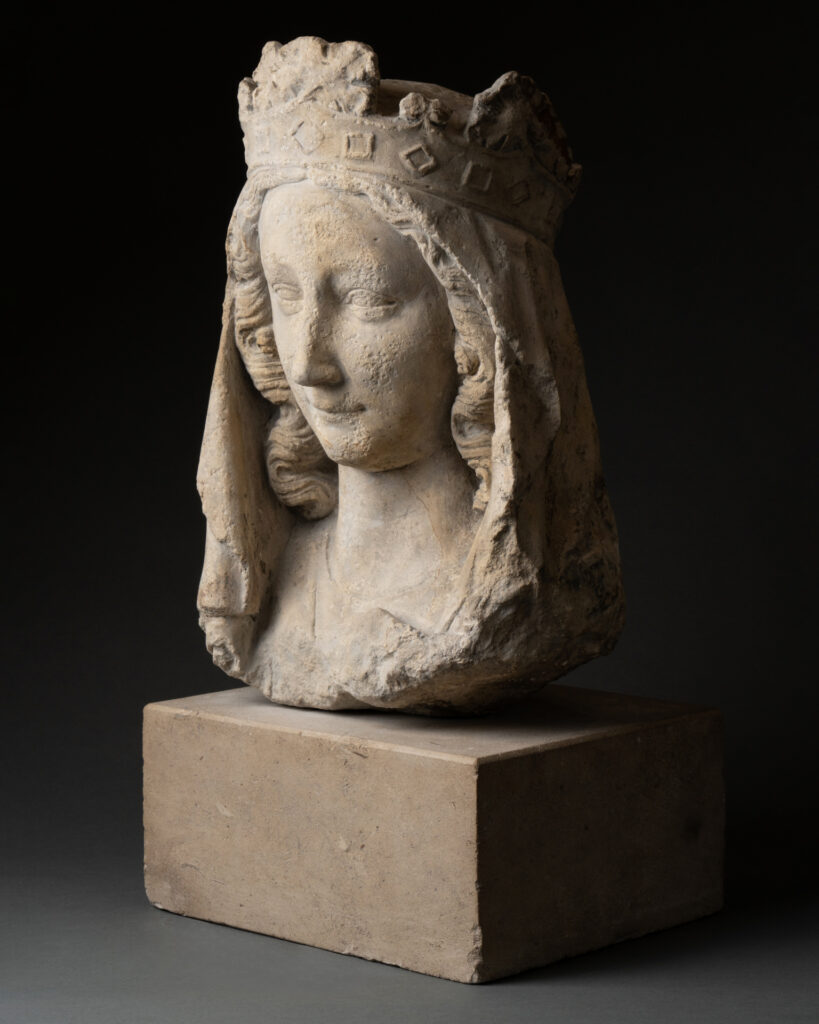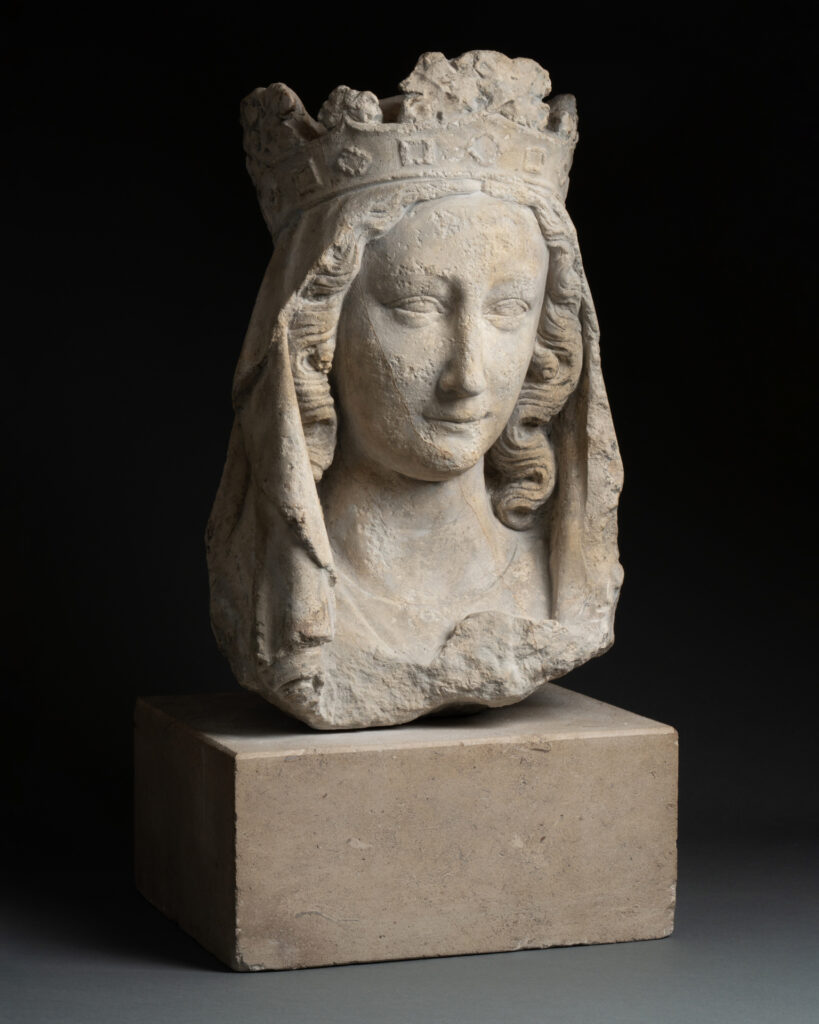This sublime white limestone head from the Gothic period represents the Virgin Mary crowned.
The statue is cut at shoulder level. The Virgin is shown young, wearing a complex crown and richly adorned. The crown is made up of intersecting acanthus leaves and decorated with lozenges and squares, imitating precious stones.
Glass shards were originally added to this type of crown to imitate the appearance of precious stones. These are called glass cabochons.
The crown is placed on a veil, clearly showing the Virgin’s face.
Her serpentine hair is composed of thick locks. The Virgin’s face is youthful. Her large forehead is unobstructed. Her eyebrows are fine and her eyes are deep-set, almond-shaped. Her nose is straight and her delicate mouth shows a slight smile.
A study of the stone (carried out by Madame and Monsieur Blanc) identified it as fine white limestone from the Tonnerre area (Yonne). It has a very fine vein of calcite on the side, a millimetre thick, which can be seen all over the head. The quarries exploiting this limestone are located between the banks of the Yonne, upstream from Auxerre. The stone, known as Tonnerre stone, was extensively quarried by sculptors in the vicinity of Auxerre and Tonnerre, and from the 14th century onwards was exported to Troyes and parts of Champagne. By the end of the Middle Ages, Tonnerre stone may have reached as far south as Paris and Lorraine.
There is also a fragment of a small hand on her bust, suggesting the presence of a child. The child she was carrying indicates that this statue was originally a Virgin and Child. There are several matches between the head of a virgin or a virgin and child and our statue. Despite their many similarities, there are no truly similar 14th-century virgins. This type of production either came from the same workshop, which copied models, or was inspired by famous or popular models.
The first of these is the Virgin’s head on display in the Louvre. It too dates from the 14th century. The glass cabochons are partially missing.
Our head is 40cm high, which suggests that the original size of this sculpture was monumental. It must have been around 1.70m tall, or life-size.
A true testament to the statuary art of the Gothic period, this beautiful Virgin’s head, both elegant and refined, remains a timeless beauty with canons that are still relevant today.
